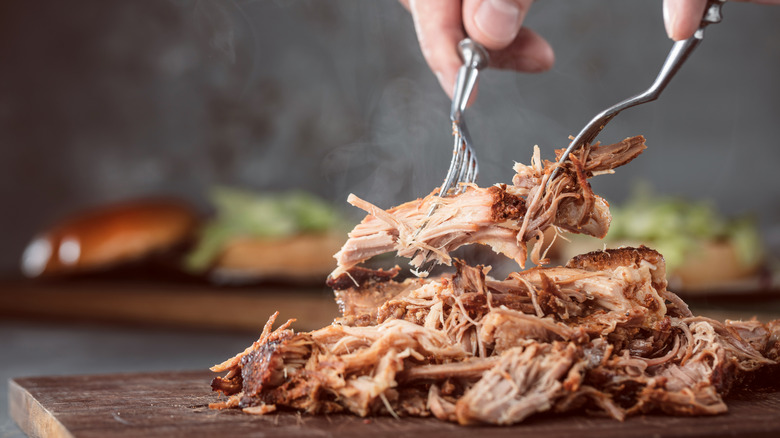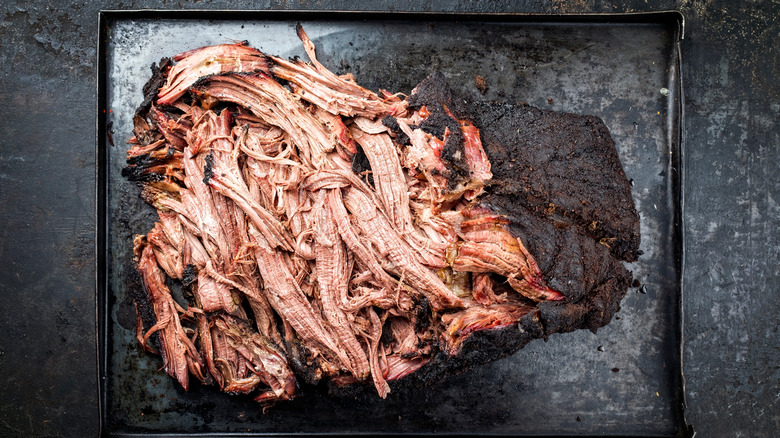Why You Should Save Leftover Juices From Pulled Pork
Low and slow-cooked barbecue has been a southern staple for hundreds of years. As Smithsonian notes, debates abound on what constitutes as real barbecue, from whether it should be made from the likes of beef brisket or pulled pork (or a plethora of other options), and how it should be prepared. Of course, there are also passionate preferences about sauce types from vinegary North Carolina sauce to South Carolina's mustardy concoctions. Texas and Kansas City have their own barbecue styles for both sauces and preparations, too.
If you want to prepare pulled pork, purists will recommend a smoker – but even an oven will do. Meanwhile, others will argue that you can get reasonable results from a grill, crockpot, or Instant Pot. However, with the latter two crispy bark is all but impossible, and maintaining a low and slow heat in a grill could be challenging.
According to The Spruce Eats, the best cut to use for pulled pork is a full shoulder. Consisting of the shoulder and front leg of a hog, it holds up well to long, low heat as the fat slowly melts, moistening the meat. A Boston butt (above the shoulder, despite a name that suggests otherwise) or picnic roast, both smaller cuts from the same part of the pig, also work well.
Once your pork has finished its slow cooking, it's likely you'll have an abundance of juicy goodness remaining. What should you do to not let it go to waste?
How to save and use leftover pulled pork juice
One of the best ways to use pulled pork juice is during reheating. Drizzling the juice over the meat before microwaving, heating it in the oven, or putting it on the stovetop helps to retain the meat's moisture. If you keep the juice on hand, it's also ideal for takeout leftovers.
However, BBQHost has many more ideas to add a pork-infused punch to your repertoire of recipes. From adding the juice to simple soup and stew recipes to fortifying your tomato sauce with more meaty flavor, BBQHost has plenty of plans for you to use that porky goodness. They even recommend adding the juice when mashing potatoes, substituting pork juice for water when boiling rice, and using a bit of the juice when preparing beans.
You may have an immediate use for your pulled pork juice, but chances are likely you need to find a way to store it. While the juice can be kept in the refrigerator or the freezer, the most important part of the storage process, according to SpicySaltySweet, is to de-fat the juice. Quick and easy, just pour the juice into an airtight container and refrigerate for a half hour. Then, use a spoon to scrape the fat off of the top. If that's not easy enough, there are simple fat separators that are affordable as well.

